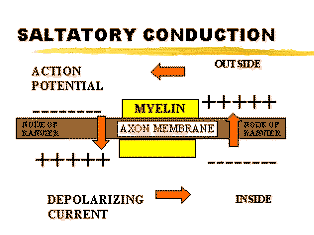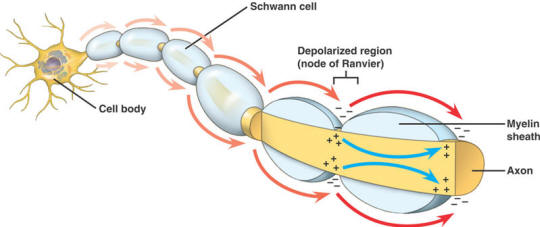Nerve physiology CIDPUSA.ORG
Axonal Polyneuropathy changes in EMG
EMG/NCV section
Learn about the Brain
Learn about nerves
Nerve Fibers
conduction which carry sensory impulses described in detail
Video below.

Search for any neurological diagnosis on this special search
Conduction along a
NerveFiber
Okay so we just talked about conduction in an unnerve fiber
In
nerve fibers, the depolarized Node of Ranvier triggers an
increase in the permeability of the sodium ion channels (and
thus depolarization) in the adjacent Node of Ranvier.

Above we see a the
cells are wrapped around central nerves, they are oligodendrocytes.
If they;re wrapped around the
peripharal Nerves they're
called Schwaan cells.In
either case there are these gaps called Nodes of Ranvier The only
place these potassium or sodium ions can enter or leave are from
these spaces that are unmyelinated Sodiums come in and potassiums
going out just like a an unmymelinated nerve fiber, except this
signal seems to jump from one node to the next. This is called
saltatory
conduction. has nothing to do with salt but it comes from the latin word
saltaire which means to jump orleap.
Due to this skipping, saltaory conduction is up to 50 times faster
than conduction through the fastest unaxons because they don't
have to travel throughout every single space before moving to
thenext.
So in essence, the action potential is generated only at the
nodes The cell membrane below the myelin sheaths hardly have any
sodium channels and are therefore not excitable anyway Since the
ionic currents are restricted to the nodes of Ranvier in the axons,
this minimizes disturbances in the Na concentration
gradients which reduces the energy costs of the Na+/K+-ATP pump that
have to restore ionic balance.
Continue to
Saltuatory conduction Video
Autoimmune cause
Key
words : action, potential, nerve, membrane, depolarizes,
negative, electron;

